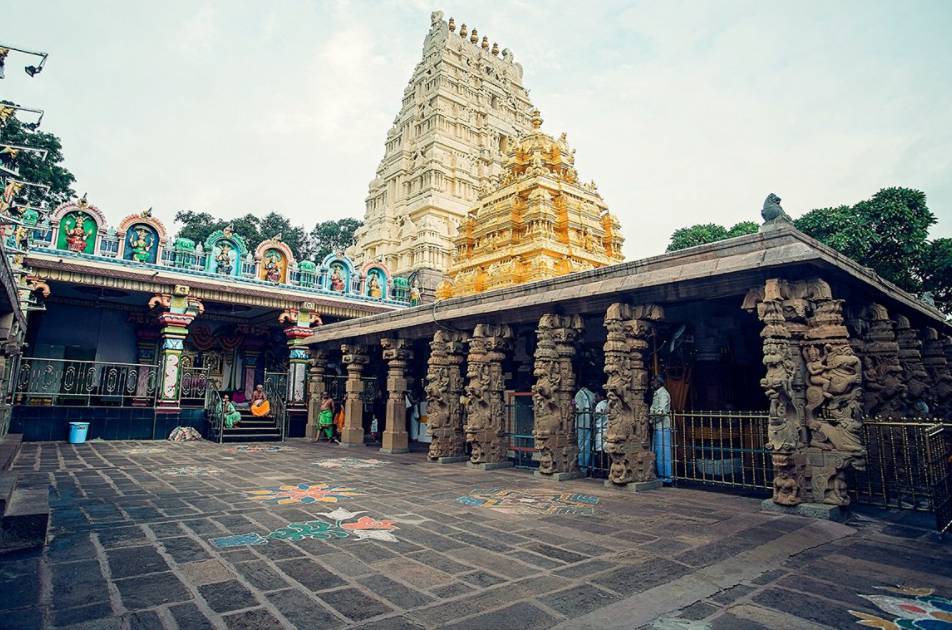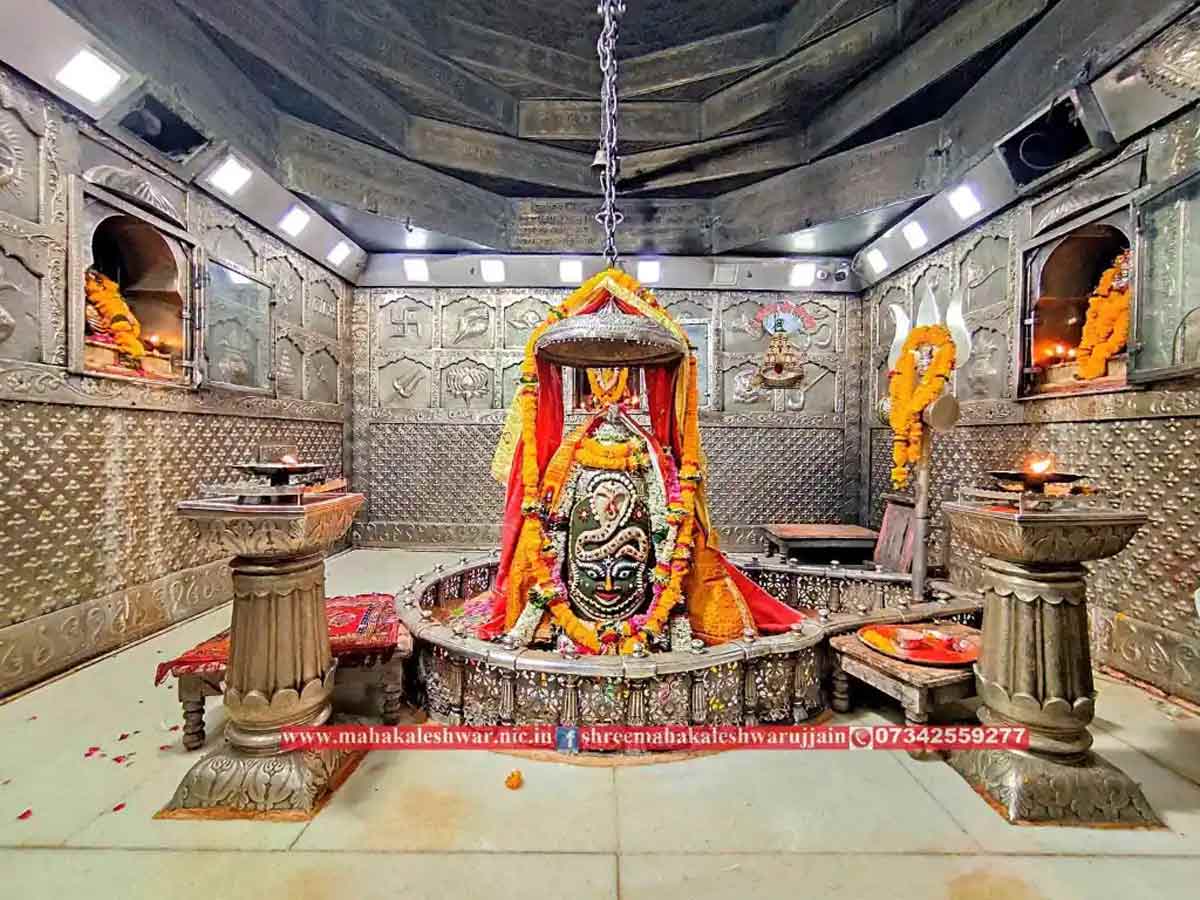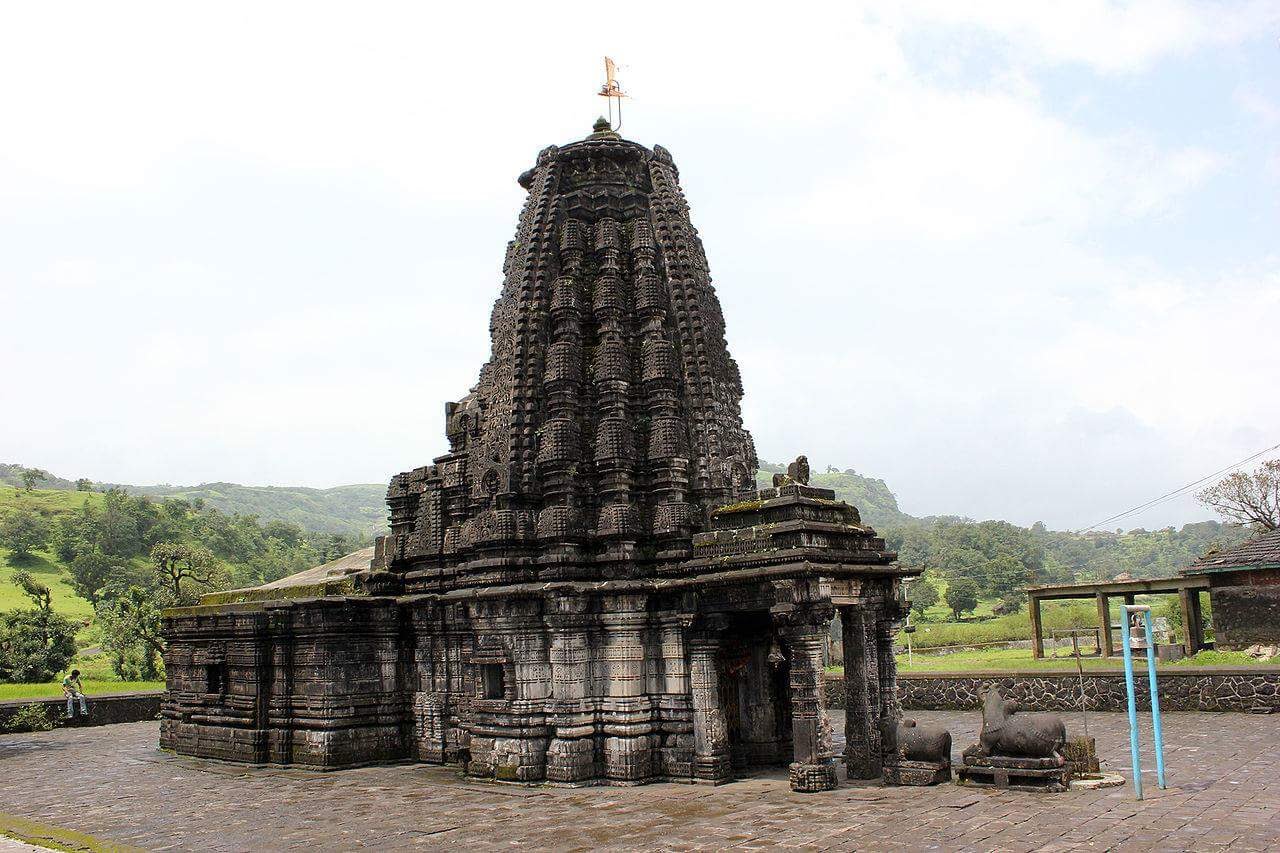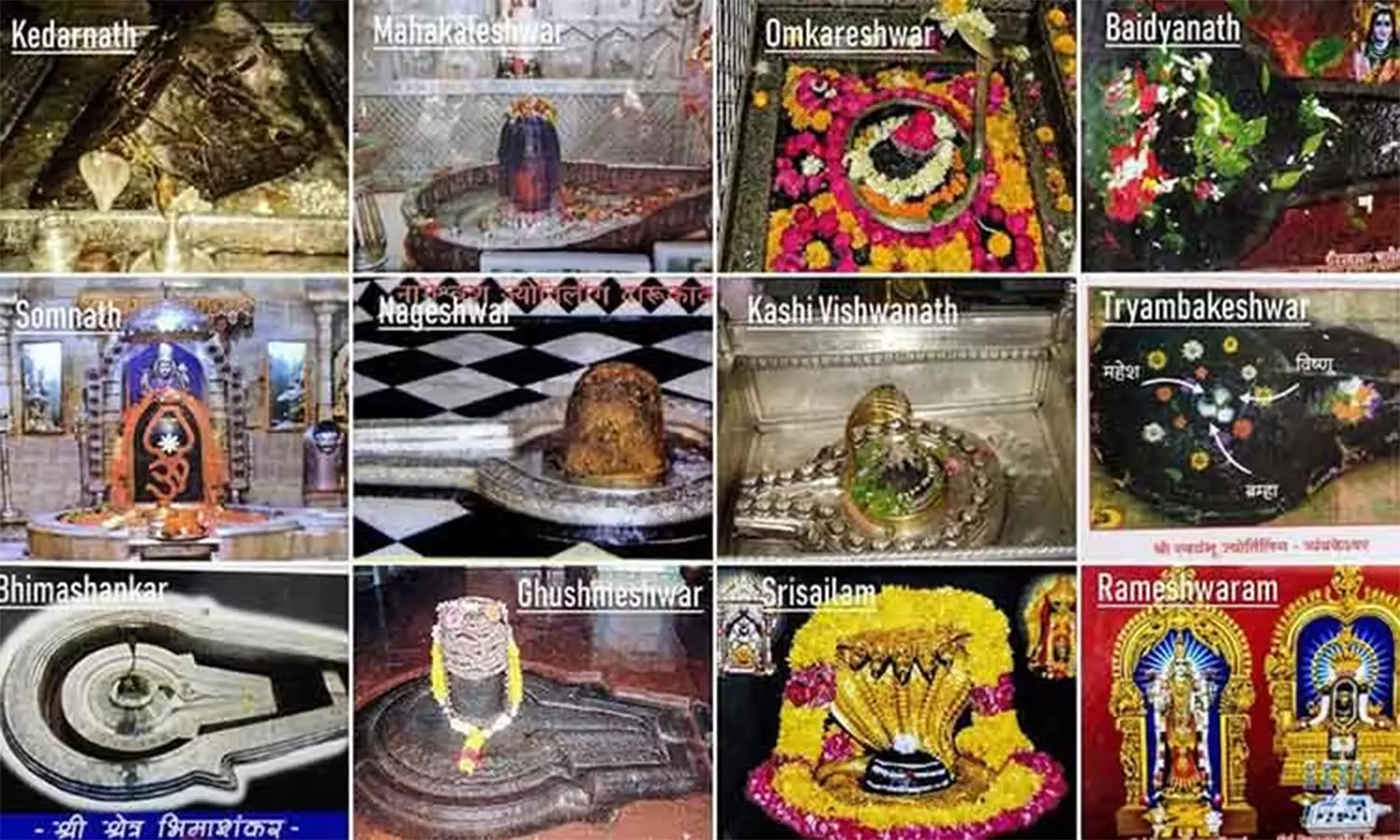India, a land steeped in spirituality, is home to the 12 Jotirlinga Shiva Temples, revered as the holiest shrines of Lord Shiva. These sacred temples symbolize the places where Shiva manifested as a Jyotirlinga—a radiant column of light. Devotees believe that visiting all 12 Jotirlingas grants salvation and divine blessings.
This article explores the history, significance, and legends associated with each Jotirlinga Shiva temple and provides essential travel details to help you plan your pilgrimage.
Table of Contents
- Introduction to the 12 Jyotirlinga Shiva Temples in India
- The Mythological Origins of the Jyotirlingas
- The Sacred 12 Jyotirlinga Shiva Temples in India
- Somnath Jyotirlinga – The Eternal Shrine of Shiva
- Mallikarjuna Jyotirlinga – The Southern Kailash
- Mahakaleshwar Jyotirlinga – The Lord of Time
- Omkareshwar Jyotirlinga – The Sacred Island Temple
- Kedarnath Jyotirlinga – The Himalayan Abode of Shiva
- Bhimashankar Jyotirlinga – The Source of River Bhima
- Kashi Vishwanath Jyotirlinga – The Spiritual Capital of India
- Trimbakeshwar Jyotirlinga – The Origin of the Holy Godavari
- Vaidyanath Jyotirlinga – The Healer of Souls
- Nageshwar Jyotirlinga – The Protector of Devotees
- Rameshwaram Jyotirlinga – The Southernmost Jyotirlinga
- Grishneshwar Jyotirlinga – The Smallest but Most Powerful
- FAQs About the 12 Jotirlinga Temples in India
- Conclusion
Introduction to the 12 Jyotirlinga Temples in India

The 12 Jyotirlingas, or “sacred pillars of light,” are scattered across India, each located in a different state. These temples are dedicated to Lord Shiva, one of the principal deities in Hinduism, revered as the supreme god responsible for the creation, preservation, and destruction of the universe. Pilgrims from all over the world visit these temples to seek the blessings of Lord Shiva, as it is believed that visiting all 12 Jyotirlingas washes away sins and leads to spiritual enlightenment.
Each Shiva temple has its own unique history, mythology, and significance. These sacred abodes of Lord Shiva stand as a testament to the divine presence and power of the deity in various forms.
The Mythological Origins of the Jyotirlingas
According to Hindu mythology, the Jyotirlingas came into existence when Lord Shiva manifested himself as a column of light. The story goes that Lord Vishnu and Lord Brahma had an argument regarding who was superior, and to resolve the dispute, Lord Shiva appeared as a limitless column of light. Both gods attempted to find the beginning and end of this light, with Vishnu taking the form of a boar and Brahma taking the form of a swan. Neither could find the end of the column, confirming Shiva’s supremacy. This divine column of light is considered the Jyotirlinga.
As a result, each of the 12 temples is believed to mark a specific location where Lord Shiva revealed himself in the form of light. The Jyotirlingas are seen as symbols of Shiva’s eternal presence, representing his infinite and formless nature.
The Sacred 12 Jyotirlinga Shiva Temples in India
1.Somnath Jyotirlinga – The Eternal Shrine of Shiva

Located in Gujarat, Sri Somnath (Jyotirlinga) Temple is believed to be the first Jyotirlinga. This Shiva temple has a rich history of destruction and reconstruction, symbolising resilience and devotion.
Legend of Somnath Jyotirlinga
The temple is linked to Chandra (Moon God), who was cursed by his father-in-law, Daksha. Seeking redemption, he worshipped Lord Shiva, who blessed him and restored his brilliance.
How to Reach Somnath
- Nearest Airport: Diu Airport (80 km)
- Nearest Railway Station: Veraval Railway Station (7 km)
- By Road: Well-connected by road with major Gujarat cities
2. Mallikarjuna Jyotirlinga – The Southern Kailash

Located in Srisailam, Andhra Pradesh, Mallikarjuna Jyotirlinga is considered the Kailash of the South and holds immense significance.
Legend of Mallikarjuna Jyotirlinga
After a dispute with his parents, Lord Kartikeya left Kailash. To console him, Shiva and Parvati came to Srisailam, making it their divine abode.
How to Reach Mallikarjuna
- Nearest Airport: Hyderabad Airport (200 km)
- Nearest Railway Station: Markapur Railway Station (85 km)
- By Road: Accessible via state transport buses from Hyderabad
3.Mahakaleshwar Jyotirlinga – The Lord of Time

Situated in Ujjain, Madhya Pradesh, Mahakaleshwar Jyotirlinga is unique because its Shiva Lingam is self-manifested. The temple is famous for its Bhasma Aarti, where fresh cremation ash is offered to Shiva.
Legend of Mahakaleshwar Jyotirlinga
King Chandrasena was attacked by enemies. Lord Shiva emerged as Mahakal (the Lord of Time) and destroyed them, promising to protect Ujjain forever.
How to Reach Mahakaleshwar
- Nearest Airport: Indore Airport (55 km)
- Nearest Railway Station: Ujjain Junction (2 km)
- By Road: Well-connected with Indore and Bhopal
4. Omkareshwar Jyotirlinga – The Sacred Island Temple (Madhya Pradesh)

Location: Khandwa district, Madhya Pradesh
Mythology: The Omkareshwar Temple is located on an island in the shape of the Om symbol. Lord Shiva is worshipped here as Omkareshwar, the source of the Om mantra.
History: The temple is mentioned in the Skanda Purana, and it is an important pilgrimage site.
How to Reach: The nearest railway station is Khandwa, and the nearest airport is Indore.
5. Kedarnath Jyotirlinga – The Himalayan Abode of Shiva (Uttarakhand)

Location: Kedarnath, Uttarakhand
Mythology: The Kedarnath Temple is one of the Char Dham Yatra sites. It is believed that Lord Shiva appeared here in the form of a bull to grant blessings to the Pandavas during the Mahabharata.
History: The temple is ancient, and its origins date back to the 8th century.
How to Reach: The nearest airport is Jolly Grant Airport (Dehradun), and the nearest railway station is Rishikesh.
6.Bhimashankar Jyotirlinga – The Source of River Bhima (Maharashtra)

Location: Pune, Maharashtra
Mythology: Bhimashankar is believed to be the place where Lord Shiva killed the demon Bhima. The temple is also believed to have healing powers.
History: The temple’s origin can be traced back to ancient times.
How to Reach: Pune is the nearest major city, with an airport and railway station.
7. Kashi Vishwanath Jyotirlinga – The Spiritual Capital of India (Uttar Pradesh)

Location: Varanasi, Uttar Pradesh
Mythology: Kashi Vishwanath is one of the most famous Shiva temples, dedicated to Vishwanath, the lord of the universe. It is believed that those who die in Varanasi attain liberation.
History: The temple has been destroyed and rebuilt several times, but it has always remained a center of worship.
How to Reach: Varanasi is well connected by air, rail, and road.
8. Trimbakeshwar Jyotirlinga – The Origin of Holy Godavari (Maharashtra)

Location: Trimbak, Maharashtra
Mythology: Trimbakeshwar is unique because it represents the three aspects of Lord Shiva — creation, preservation, and destruction — through three lingas.
History: The temple is an ancient site, mentioned in several scriptures, and is part of the Panchavati pilgrimage circuit.
How to Reach: Nashik is the nearest major city with an airport and railway station.
9. Vaidyanath Jyotirlinga – The Healers of Souls (Jharkhand)

Location: Deoghar, Jharkhand
Mythology: It is believed that Lord Shiva appeared here in the form of Vaidyanath, the healer. It is associated with the myth of Ravana, who prayed to Shiva here.
History: The temple has been mentioned in ancient texts and is an important pilgrimage destination.
How to Reach: The nearest railway station is Jasidih, and Deoghar is well connected by road.
10. Nageshwar Jyotirlinga – The Protector of Devotees (Gujarat)

Location: Dwarka, Gujarat
Mythology: Nageshwar is dedicated to Lord Shiva in the form of a serpent, believed to have healing powers.
History: Nageshwar is one of the most ancient Jyotirlinga temples in India, mentioned in the Shiva Purana.
How to Reach: Dwarka is well connected by road and rail, and the nearest airport is in Jamnagar.
11.Ramanathaswamy Jyotirlinga – The Southernmost Jotirlinga (Tamil Nadu)

Location: Rameswaram, Tamil Nadu
Mythology: Ramanathaswamy is associated with Lord Rama’s worship of Lord Shiva before going to Lanka.
History: The temple dates back to ancient times and is mentioned in the Ramayana.
How to Reach: Rameswaram is well connected by train, and the nearest airport is in Madurai.
12. Grishneshwar Jyotirlinga – The smallest but most powerful (Maharashtra)

Location: Ellora, Maharashtra
Mythology: Grishneshwar is the last of the 12 Jyotirlingas and is believed to be where Lord Shiva appeared to grant liberation to devotees.
History: The temple was built in the 18th century and is known for its architectural beauty.
How to Reach: Aurangabad is the nearest city with an airport and railway station.
FAQs about 12 Jotirlinga Temples in India
1. What is a Jyotirlinga?
A Jyotirlinga is a sacred representation of Lord Shiva as a divine column of light. It is believed to be self-manifested and holds immense spiritual power.
2. How many Jyotirlingas are there in India?
There are 12 Jyotirlingas spread across different states in India.
3. Which is the most powerful Jyotirlinga?
Each Jyotirlinga has its unique significance, but Mahakaleshwar and Kashi Vishwanath are often regarded as extremely powerful.
4. Can we visit all 12 Jyotirlingas in one trip?
Yes, many devotees undertake a 12 Jyotirlinga Yatra, which can take around 20–30 days, covering different states of India.
5. What is the best time to visit Jyotirlingas?
Most Jyotirlingas can be visited year-round, but the best time is Shivratri or Shravan month (July-August) when special rituals are performed.
6. Is there a specific order to visit the Jyotirlingas?
No, there is no fixed order, but many pilgrims follow a route based on their convenience.
7. Are there any special rituals in Jyotirlinga temples?
Yes, most temples have Abhishek Pujas, Rudrabhishek, and Aartis performed daily. Mahakaleshwar’s Bhasma Aarti and Somnath’s evening Aarti are must-experience rituals.
8. Are women allowed in all Jyotirlinga temples?
Yes, but some temples like Trimbakeshwar have restrictions on women entering the inner sanctum.
9. Can I do online bookings for pujas in Jyotirlinga temples?
Yes, many temples offer online darshan and puja bookings through their official websites.
10. Which Jyotirlinga is the hardest to reach?
Kedarnath Jyotirlinga, located in the Himalayas, requires a trek of 16 km from Gaurikund, making it the most challenging to visit.
Conclusion
The 12 Jotirlinga Temples in India are not just places of worship but spiritual centers that radiate divine energy. A pilgrimage to these sacred sites is believed to cleanse the soul, remove obstacles, and bring peace. Whether you visit for faith, history, or devotion, these temples offer a profound experience of Shiva’s eternal presence.
Har Har Mahadev!
Would you like additional travel tips or itinerary suggestions for a Jyotirlinga tour?






